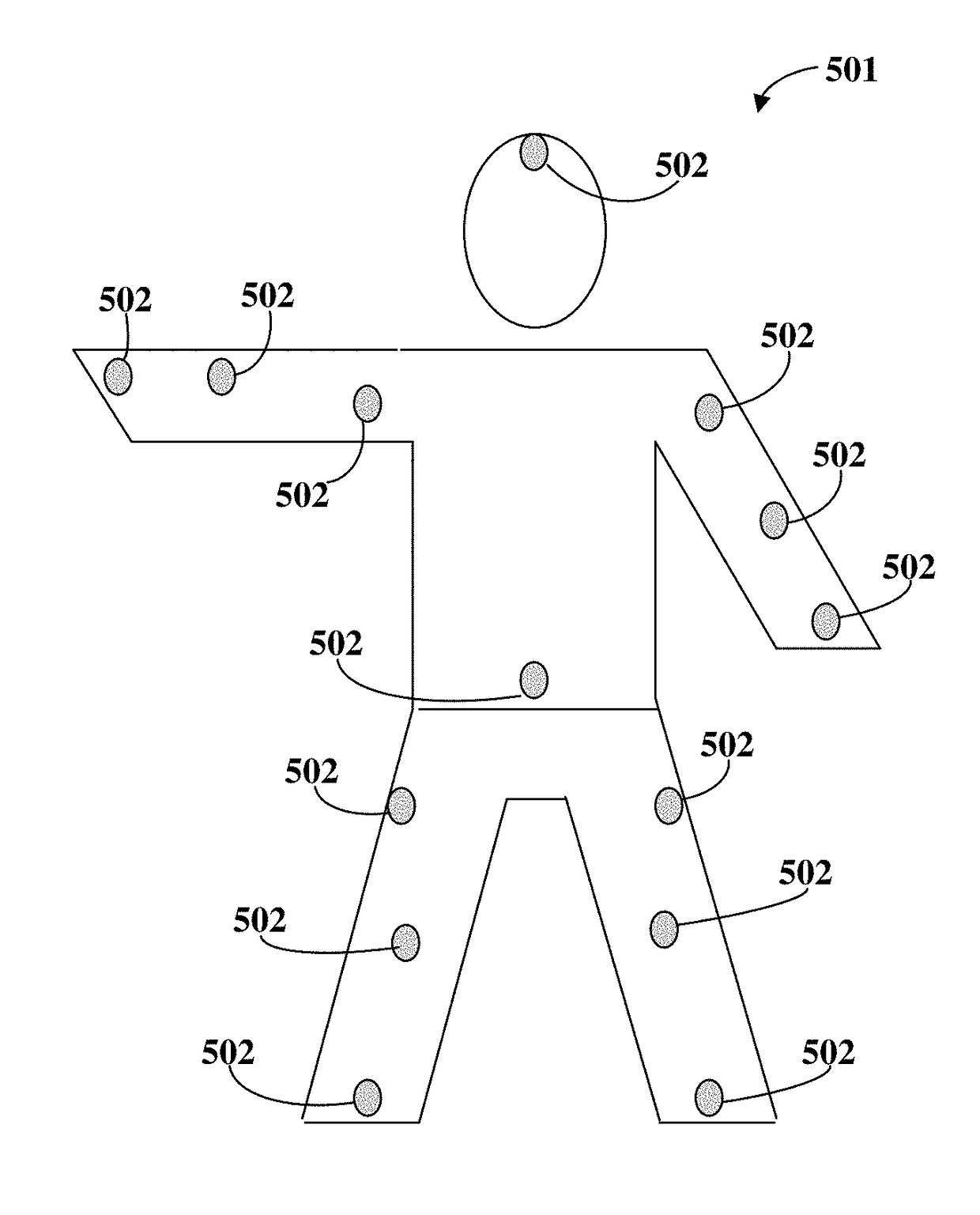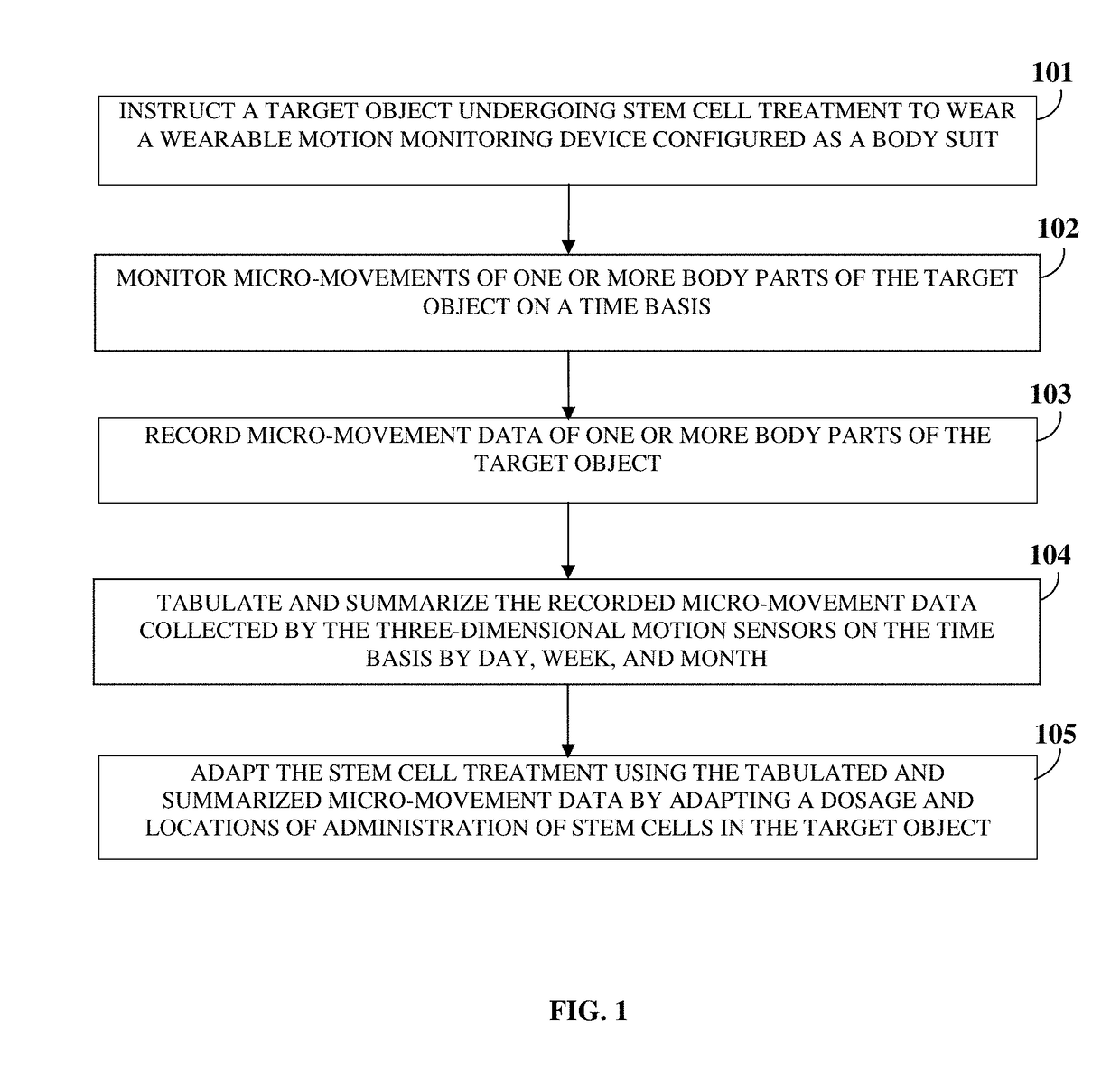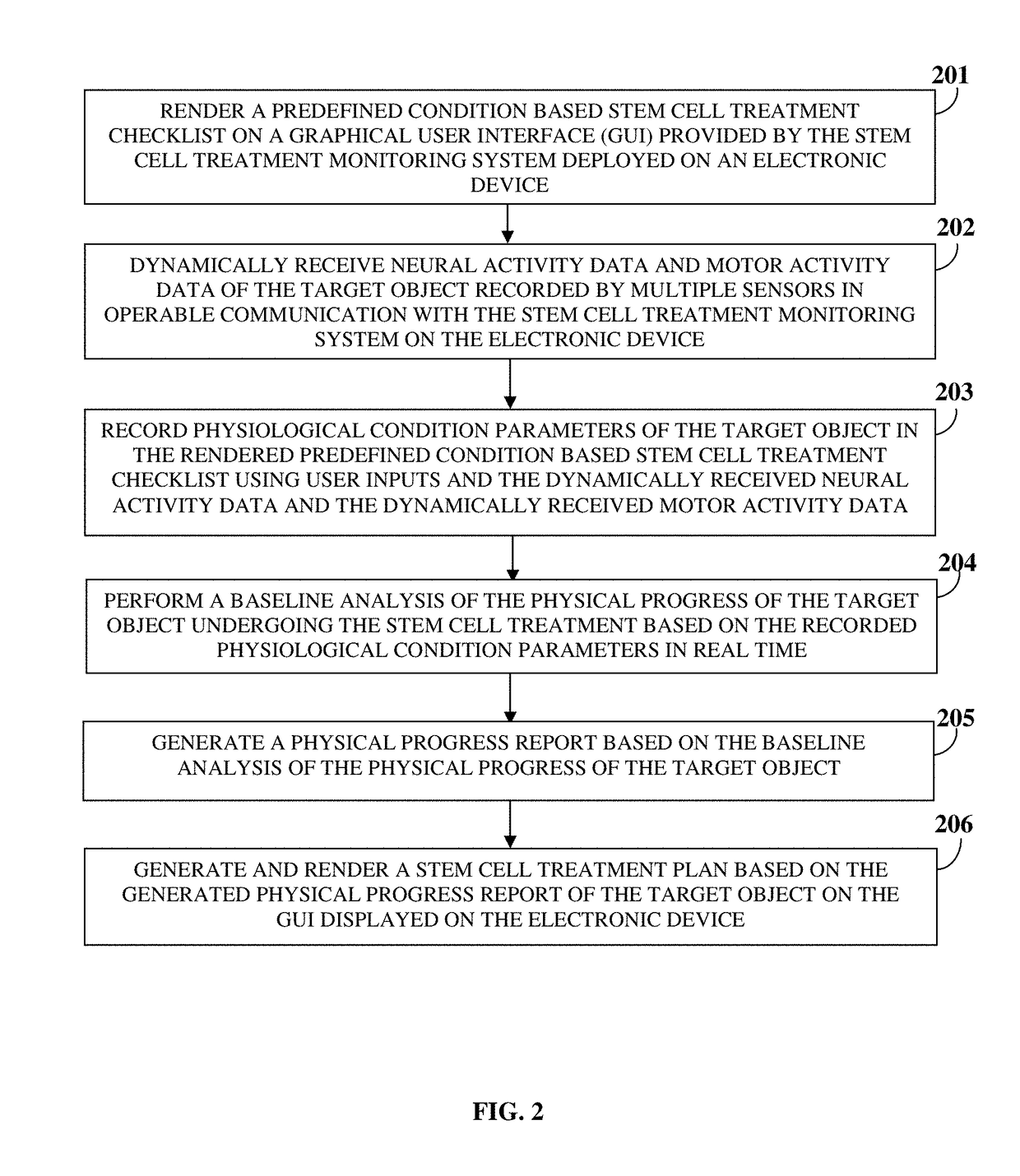Determining Stem Cell Treatment Effectiveness By Monitoring Physical Progress
a technology of physical progress and stem cell treatment, which is applied in the field of determining the effectiveness of stem cell treatment for patients, can solve the problems of incomplete and/or inoperable data generation, less than optimal treatment of the medical condition of the patient undergoing stem cell treatment, and conventional stem cell treatment methods that do not provide the information required to determine the effectiveness of stem cell treatment administered to the patien
- Summary
- Abstract
- Description
- Claims
- Application Information
AI Technical Summary
Problems solved by technology
Method used
Image
Examples
Embodiment Construction
[0032]FIG. 1 illustrates a method for monitoring physical progress of a target object undergoing stem cell treatment for determining effectiveness of the stem cell treatment and adapting the stem cell treatment. As used herein, “physical progress” refers to an improvement in a medical condition of a target object undergoing stem cell treatment over a duration of time, for example, an ability of a patient to move a certain part of the patient's body which was not movable prior to the stem cell treatment. Also, as used herein, “medical condition” refers to a disease, an injury, a physiological condition, a disorder, etc. The medical condition is, for example, a spinal cord injury, a brain injury, a neurological disease, Lyme disease, a developmental disorder such as Asperger syndrome, Autism, etc. Also, as used herein, “target object” refers to an individual such as a person, an animal, etc., having a medical condition and undergoing stem cell treatment. In the stem cell treatment, st...
PUM
 Login to view more
Login to view more Abstract
Description
Claims
Application Information
 Login to view more
Login to view more - R&D Engineer
- R&D Manager
- IP Professional
- Industry Leading Data Capabilities
- Powerful AI technology
- Patent DNA Extraction
Browse by: Latest US Patents, China's latest patents, Technical Efficacy Thesaurus, Application Domain, Technology Topic.
© 2024 PatSnap. All rights reserved.Legal|Privacy policy|Modern Slavery Act Transparency Statement|Sitemap



